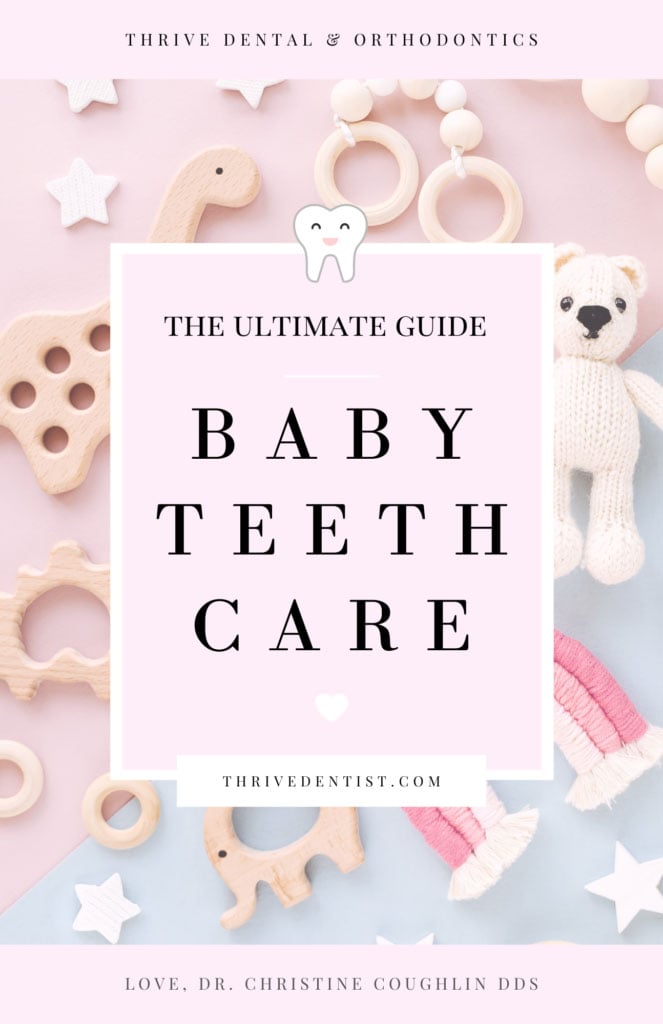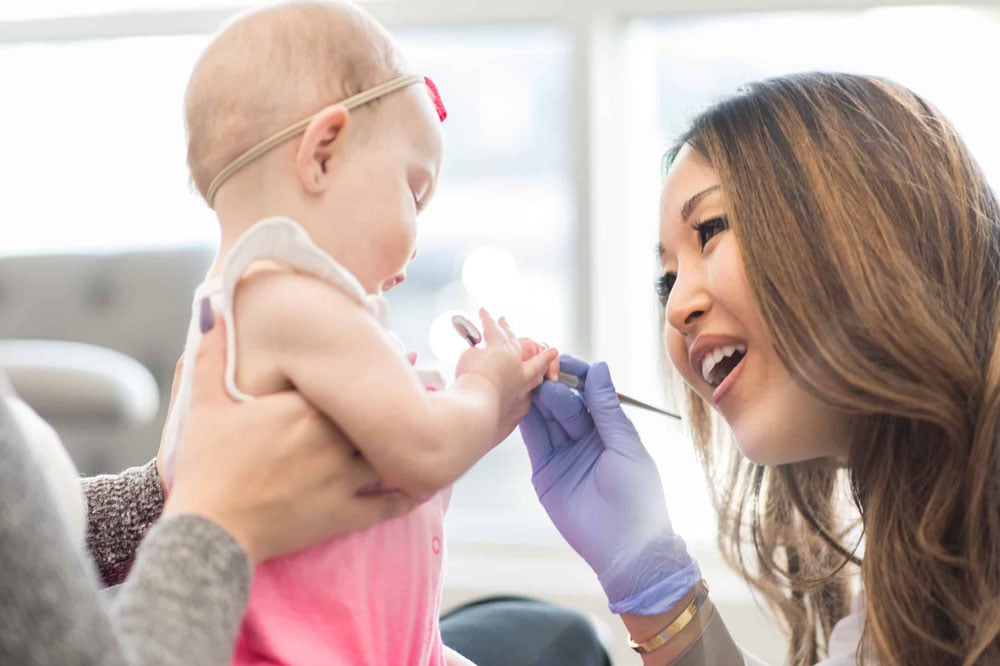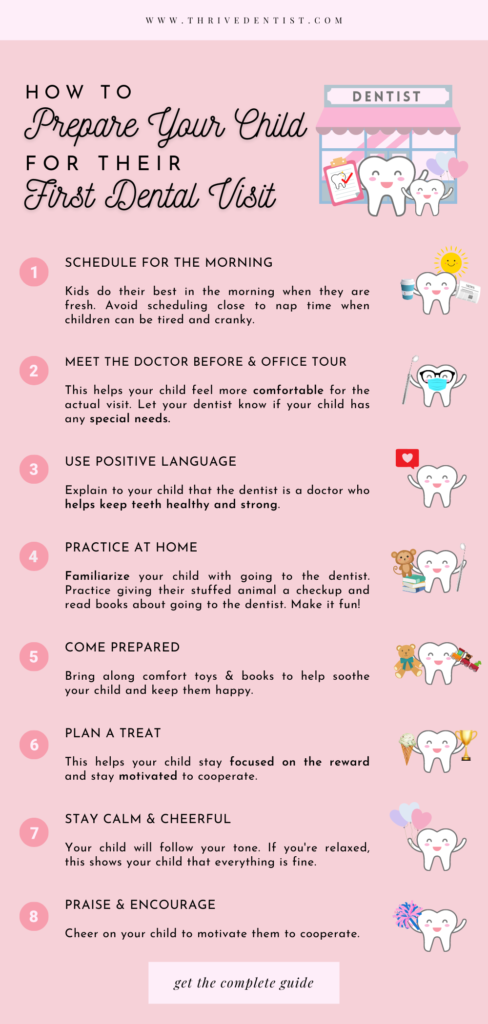When your little one suffers with teething pain, this can be frustrating for you and baby.
But knowing the signs and symptoms to look can help you sooth your baby with the right remedies.
When your baby refuses to eat or sleep and is fussier than usual, this may be a sign of teething.
You can expect your baby to start teething between four and twelve months old.
Teething is usually mildly uncomfortable, but some babies may experience more discomfort than others.
Some of the symptoms of teeth include drooling, irritability, constant crying, and refusing food and naptime.
Teething is a natural part of your baby’s oral development. It prepares the jaw for teeth to erupt.
So it’s crucial to support this process to ensure that your baby’s teeth, mouth, and jaw grow properly.
This post will prepare you to recognize the signs of teething, know what to expect during this process, and know what to do to soothe your little one.
There are so many teething remedies out there but not all remedies are good for your baby.
We’ll talk about which remedies to avoid, which ones are safe and which help support proper development.

What is teething?
Did you know that your baby is born with a full set of teeth under the gums?
Teething is the process of those teeth breaking through the gum line.
Your child should have all 20 of their teeth erupted by age three. As your child grows up, these baby teeth will eventually fall out as the permanent adult teeth come in to replace them.
Baby teeth break through the gums in a series of stages.
The bottom teeth typically come in first. But sometimes teeth may erupt out of order, which is generally not an issue.
Every baby is different so don’t panic if your baby’s teeth are growing in at a different rate or pattern.
If you’re concerned, come in for a check up so your dentist can verify your baby’s proper oral development.
When does teething begin and end?

Your baby will probably start teething around the same age you started teething, since it’s genetic.
Some babies may starting teething a little earlier than others or little later than others.
The first little teeth to break through are typically the lower central incisors (front teeth) around age 4-7 months.
Next come the top central incisors, which come in around 8-12 months of age.
Then the upper lateral incisors (teeth flanking the central incisors) generally appear around 9-13 months, followed by the lower lateral incisors around 10-16 months.
Next, the first molars come in, starting with the upper first molars around 13-19 months. The lower first molars follow, around 14-18 months.
Around age 16-22 months (toddler age), the upper canines (cuspids) erupt followed by the lower canines around 17-23 months.
Around 25-33 months, the upper second molars emerge. Their appearance typically signals the end of your baby’s teething process.
It’s okay if your baby’s teething progress is slightly different than these general guidelines.
But your baby hasn’t had any teeth come in by 18 months, come see your dentist so we can make sure everything is okay.
What are teething symptoms?
While some babies don’t experience any teething symptoms, some babies might experience one or more of the following symptoms:
- Refusal of food: Your baby may not have much of an appetite due to inflamed gums.
- Drooling: You’ll see more drooling than normal.
- Fussiness/ crankiness: Your baby will be more fussy and irritable than normal due to the discomfort.
- Sore and swollen gums: Your baby’s gums may appear red and swollen due to inflammation.
Symptoms not related to teething
While teething can cause discomfort for your baby, it shouldn’t cause excessive crying or sleep problems.
Also, teething does not actually cause a fever, runny nose, diarrhea, etc. However, during teething, your baby’s gums are more vulnerable to viruses that cause an illness or cold.
If your child appears very sick, make sure to visit the doctor.
How to relieve teething discomfort
Although it’s normal to have teething discomfort, you can take certain steps to help your baby during this time.
ONe of the best solutions is a gum massage. It’s easy, safe, and very effective. Rub your baby’s gums witha clean finger or a washcloth. You can also try using a cold spoon for extra relief.
Cold foods like chilled sliced fruit or veggies can help relieve your baby’s discomfort and it may help distract them for a little while.
I don’t recommend teething biscuits because they are highly processed and full of refined carbohydrates.
Instead, try a mesh feeder with chopped fruit. This way, your baby is getting good nutrients at the same time.
The best teething rings and toys
Teething rings are an effective remedy that allows babies to get some chewing relief for their gums.
But be sure to choose one that is safe. It should be made of solid, BPA-free plastic or silicone. Avoid liquid or gel-filled rings that can leak dangerous chemicals if the ring breaks.
You can also chill the ring in the fridge for added relief, but do not freeze the ring.
Freezing the ring will make it too hard and may cause for the ring to break.
I personally recommend solid wood teething rings and toys because they’re the most natural and safe for your baby.
And wood has the added bonus of promoting proper oral development.
Other natural teething remedies
Natural herbal remedies you can try are chamomile or clove, famous for their anti-inflammatory properties.
Try making a chamomile popsicle or soak a washcloth with chilled chamomile tea to rub on sore gums.
You can also distract your baby with their favorite toy, book, or movie to keep their mind off of the discomfort.
The teething process is natural and should pass within a week. Symptoms usually appear a few days before a tooth begins to grow in, and usually dissipates within a few days after the tooth appears
Teething remedies to avoid
Avoid teething gels and medications that contain ingredients like benzocaine that are dangerous for your baby.
In rare cases, painkillers should be used with great caution. Only choose a painkiller that is specifically made for children. And of course, never exceed the recommended dosage.
How to care for baby teeth
Although baby teeth eventually fall out, they have a long-term affects on permanent teeth.
So it’s crucial to take good care of them.
You’ll want to bring your child in for their first dental visit after the first tooth appears, at least by 1 year old.

As soon as the first little tooth appears, around age 6 months, start to brush your baby’s teeth.
Start brushing your baby’s teeth after meals and snacks to prevent plaque build-up. Use only a smear of non-toxic baby toothpaste, using a baby-sized toothbrush.
Your baby needs special toothpaste that is free of harsh chemicals, like SLS, and other toxic ingredients that can harm development. Unfortunately, most conventional toothpastes (including “kids” toothpastes) contain these harmful ingredients, so it’s important to find a non-toxic toothpaste for your little one.
And never send your baby to bed with a bottle to prevent baby bottle tooth decay.
It’s important that you know the essentials of caring for your baby’s teeth to prevent future problems.
So I created this Comprehensive Baby Teeth Care Guide for you to download for FREE.

Now you’ll have all the tools for starting your child on the right path for amazing dental health for life!
Conclusion
If you and your baby are going through the teething process, remember that this will pass and your baby will be feeling better soon.
To help you and baby get through this time:
- try using a wooden teeth toy or cold sliced fruit for your baby to chew on
- try an herbal remedy like chamomile to soothe and reduce inflammation
- if all else fails, try to distract your baby with toys, games, or getting outdoors
- And don’t be afraid to get some help from a good friend or family member, so that you can take a break!
Hang in there! You’ve got this! And your baby will be back to her normal self in no time!
If you have any questions about your baby’s dental health, we are always here to help. You can always bring in your little one so we can help make the process easier.
by Dr. Christine Coughlin DDS
Learn More:



